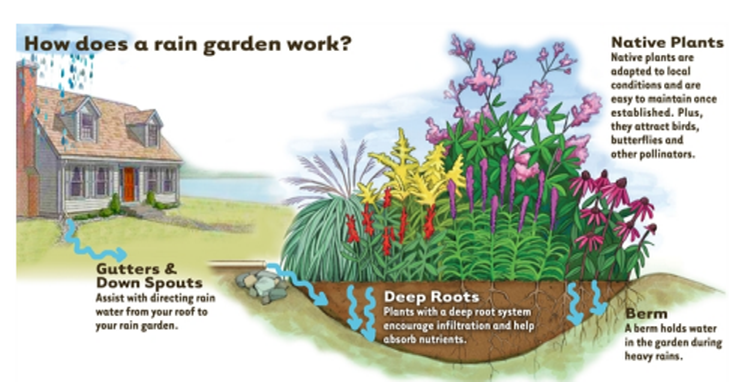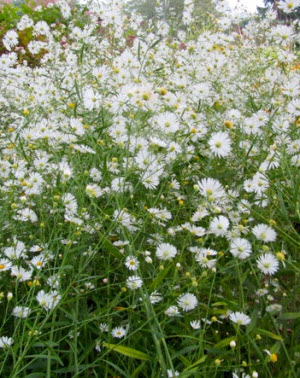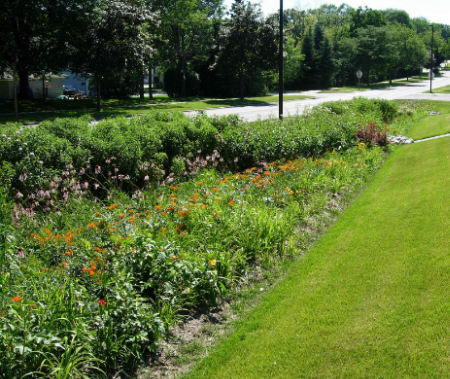Click below to listen to my 2 min. Garden Bite radio show: Rain gardens
Audio PlayerMore and more, homeowners are planting rain gardens. Some cities offer dollars toward funding your project as it protects our water and helps storm water drains. Check with your city to see if THEY offer something!!! It’s worth it.

From marshes to savannas to dry prairies, there are some wonderful choices. You must determine, first, what your sun/shade conditions will be and know the climate zone you live in. University of MN Extension offers a comprehensive list of plants. The list includes habitat and moisture preferences. These work well in Wisconsin too.
As a primer, native plants work best, lots of grasses are good choices too including Big and Little Bluestem, tall manna grass for lakeside and lots of sedges which will tolerate partial shade.

Fragrant hyssop, agastache, is a prairie perennial that will grow to 40 inches tall and blooms June through October.

Butterfly flower and new england aster are wonderful choices for part shade, attract butterflies and offer successive bloom times. That means flowers from June through October! Boltonia asteroides is a late blooming swamp to prairie perennial that can grow from 4 feet to nearly 7 feet tall. It’s blooms look like small daisies but they’re profuse! One cultivar is named ‘SnowBank’, very appropriate.

A modest 1500 sq. ft. house on a small lot may produce 5,000 gals. of runoff from a 1 inch rain storm! Holy cow, that’s a lot of water down the storm drain.
Rain gardens prevent much of that runoff allowing the water to soak into the soil, get cleansed as it passes down and then helps to fill our aquifers.
There are a couple of sites I suggest for information. The University of Minnesota Rain Gardens and Blue Thumb.
From humble to humongous, the choices abound. Here’s a peek at a rain garden a City installed …



